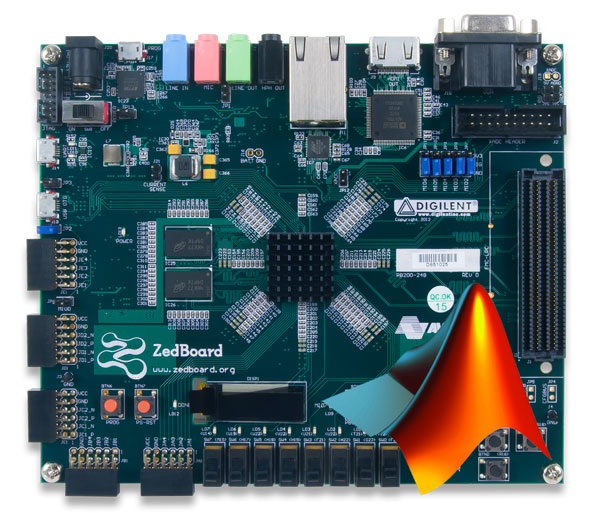
One of the strengths of using FPGA and SoC based products is the ability to develop custom solutions through innovating new algorithms. A developer, for example, may want to spin a motor more efficiently, be able to process camera images more efficiently or filter radio signals faster than what current silicon solutions exist on the market. Unliked fixed solutions, such as DSP or application specific processors; FPGA hardware offers a flexible hardware platform that enables the prototyping of a new algorithm and allows continual updating of that algorithm as the development process continues.
MATLAB (Matrix Laboratory) has been the programming language of choice for algorithm development and implementation. Not only is it a programming language, but it is also a programming environment and includes a tool called, Simulink. Simulink was initially designed as a simulation engine, and allows algorithm developers to evaluate the models which they designed with a variety of factors influencing the design. Beyond simulation, Simulink also has the capability to deploy algorithms to hardware with the help of tools such as HDL Coder to products , such as Xilinx FPGAs and SoCs.
Simulink Capabilities
- Integrated Hardware / Software workflow for Zynq and FPGA designs
- Automatic HDL Code generation
- Automatic C Code generation
- Automatic interface logic and code generation
Simulink is used to help address issues such as converting floating point to fixed point designs, timing issues, integration of control logic, analog component considerations and combining existing algorithmic IP.
Mathworks is offering a worldwide workshop on using MATLAB/Simulink with Xilinx Zynq designs. The workshop is two days, hands-on-instruction where all attendees receive (and get to keep) a Zedboard and a copy of the Matlab license. Participants will go through an entire workflow using Matlab, Simulink (Embedded and HDL Coders) and be able to interact with an instructor along the way. Topics covered are the following:
- Zynq platform overview and environment setup
- Introduction to Embedded Coder and HDL Coder
- IP core generation and deployment
- Using AXI4 interface
- Processor-in-the-loop verification
- Data interface with real-time application
- Integrating device drivers
- Custom reference design
To learn more, preview the course and the register, please visit Mathworks!


Hi. Thank you so much for a very informative article.
I’m so excited to know we can make Simulink models work on Zynq, but would this be possible with cheaper boards, such as Cora Z7 or Zybo?
I’m looking to buy either one if it works, but in the following video some say Matlab doesn’t recognize Zybo.
https://www.youtube.com/watch?v=iSAtwQt9dYM
We are looking into this – stay tuned!
OK Ushi, after connecting with the team, we unfortunately DON’T have the answer you’re looking for. We would recommend that you visit MatLab’s Service Desk (https://www.mathworks.com/hardware-support/request-hardware-support.html) and ask there. Let us know what you find out!